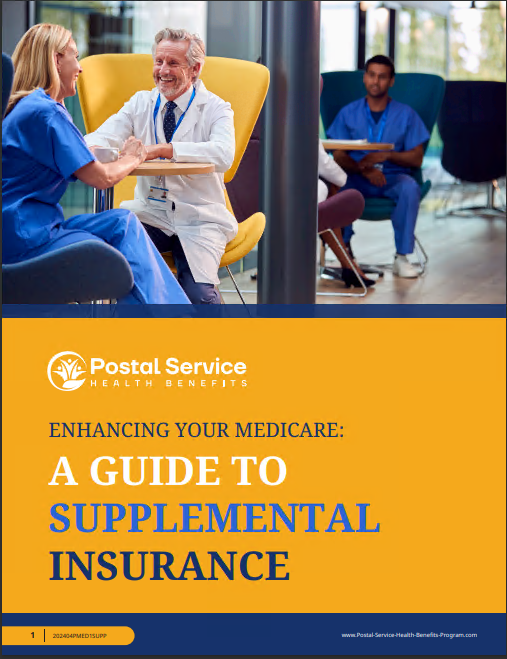Key Takeaways:
- The 2024 PSHB Open Season brings significant changes for postal workers, making it critical to review your health plan and ensure it meets your needs for 2025.
- Understanding new plan options, costs, and provider networks will help you make informed decisions during the PSHB Open Season.
Don’t Overlook These Key Updates — PSHB Open Season 2024 Could Bring Big Changes to Your Health Plan
The Postal Service Health Benefits (PSHB) Open Season for 2024 is just around the corner, running from November 11, 2024, to December 9, 2024. This Open Season is particularly important because it represents the first time that postal workers and retirees will transition from the Federal Employees Health Benefits (FEHB) program to PSHB. Starting in January 2025, postal workers will no longer be covered by FEHB, making the upcoming Open Season a critical period for choosing the right healthcare plan under PSHB.
The PSHB program is designed specifically for postal employees and retirees, and it offers different plan structures, benefits, and costs compared to FEHB. To make sure your health coverage aligns with your needs in 2025, it’s essential to stay informed about these updates, compare your options, and take action during the PSHB Open Season.
What Is Changing with PSHB Open Season 2024?
The transition from FEHB to PSHB marks a significant shift in healthcare coverage for postal workers and retirees. PSHB plans are specifically tailored to the postal workforce, creating a separate insurance pool from other federal employees. This transition could affect not only the types of plans available but also the cost structure and provider networks offered by these new plans.
This means postal employees will need to take a close look at their current coverage under FEHB and compare it with the PSHB options available during the 2024 Open Season. Without careful consideration, there’s a risk of ending up with a plan that doesn’t meet your healthcare needs or costs more than expected. Let’s take a closer look at what this change means for postal workers and retirees.
Why You Should Take PSHB Open Season Seriously
Failing to make an active choice during the 2024 PSHB Open Season could result in being automatically enrolled in a default plan. While automatic enrollment ensures continuous coverage, the default plan might not offer the specific benefits or provider networks you rely on. This could lead to higher out-of-pocket costs or limited access to your preferred healthcare providers.
During Open Season, you’ll have the opportunity to compare the available PSHB plans, evaluate their benefits, and determine which plan aligns best with your current and anticipated healthcare needs. This period is also a good time to assess your healthcare usage, whether you’re expecting to require more medical services in 2025 or if you’re looking for ways to reduce your healthcare costs.
What to Expect from PSHB Plan Offerings
The new PSHB plans will differ from the FEHB plans you may have been used to. While the FEHB covered all federal employees, the PSHB is exclusively for postal workers and retirees, meaning the structure of the plans could be more focused on the needs of postal employees. Here are some key factors to expect from PSHB plan offerings:
1. Tailored Coverage for Postal Workers
PSHB plans are designed with postal employees in mind, which means the benefits and coverage options may be more tailored to the unique needs of the postal workforce. This could lead to differences in coverage for certain services, such as preventive care, specialist visits, or prescription drugs. It’s important to review these details carefully to ensure the plan you select offers the coverage you need.
2. Changes in Premiums and Out-of-Pocket Costs
One of the most significant changes you may encounter is the difference in cost structure between FEHB and PSHB plans. Premiums, deductibles, copayments, and coinsurance may vary based on the new PSHB plans, meaning you’ll need to compare not just the monthly premium but the overall cost of healthcare services under each plan.
3. Provider Networks
Each PSHB plan will have its own network of healthcare providers, and these networks may differ from those offered under FEHB. Before selecting a plan, you’ll want to verify whether your preferred doctors, specialists, and hospitals are part of the network. Staying within the network can help you avoid higher out-of-pocket costs associated with out-of-network care.
4. Prescription Drug Coverage
For postal workers and retirees who rely on prescription medications, it’s important to review the drug coverage offered under each PSHB plan. Formulary lists (the list of covered medications) may differ from FEHB plans, so you’ll need to ensure that your medications are covered at a reasonable cost under the new plan.
Key Considerations Before Selecting a PSHB Plan
Choosing the right healthcare plan during the PSHB Open Season requires careful thought and evaluation. Here are some key considerations to keep in mind before making your decision:
1. Assess Your Healthcare Needs
Start by reviewing your current healthcare usage. Are you managing chronic conditions that require frequent medical visits or specialized care? Do you take prescription medications regularly? If so, you’ll need to ensure that your PSHB plan covers these services at a cost you can afford.
For example, if you anticipate needing regular visits to specialists or ongoing treatment for a medical condition, it may make sense to choose a plan with a higher premium but lower out-of-pocket costs. On the other hand, if you’re in good health and only require occasional medical care, a lower-premium plan with higher deductibles might be a more cost-effective option.
2. Compare Plan Costs Beyond Premiums
While it’s easy to focus solely on the monthly premium, you should also consider other costs associated with healthcare, such as:
- Deductibles: The amount you’ll need to pay out-of-pocket before your insurance begins covering services.
- Copayments: The fixed amount you’ll pay for each medical service, such as a doctor’s visit or prescription.
- Coinsurance: The percentage of costs you’ll share with the plan after meeting your deductible.
- Out-of-pocket maximum: The most you’ll have to pay in a year before your plan covers 100% of remaining covered services.
By evaluating these costs alongside your premium, you’ll get a clearer picture of your total healthcare expenses under each PSHB plan.
3. Check Provider Networks
Ensuring that your preferred doctors, hospitals, and specialists are in-network is critical. Receiving care from out-of-network providers could result in much higher costs, so before selecting a plan, make sure to verify whether your medical providers are covered under the PSHB plan’s network.
If you’re currently seeing a specialist or undergoing ongoing treatment, be sure to check if these services are covered and what your out-of-pocket costs would be under different plans.
4. Evaluate Prescription Drug Coverage
Prescription drug coverage is another key factor to consider. Each PSHB plan will have its own formulary, or list of covered medications, and the cost of prescription drugs can vary significantly between plans. Be sure to review the formulary to ensure your medications are covered at a price you can afford.
5. Consider Family Coverage
If you’re covering dependents, it’s essential to evaluate how each PSHB plan handles family coverage. Some plans may offer lower deductibles or better coverage for dependents, while others may have higher family premiums. Reviewing these details is critical to ensure you’re selecting a plan that provides comprehensive coverage for your family’s healthcare needs.
6. Plan for Retirement and Medicare Coordination
For postal workers who are retired or nearing retirement, understanding how your PSHB plan coordinates with Medicare Part A (hospital insurance) and Part B (medical insurance) is essential. Some PSHB plans may offer benefits that work in tandem with Medicare, potentially reducing your out-of-pocket costs.
If you’re eligible for Medicare, review the coordination of benefits to ensure that your PSHB plan provides the coverage you need without duplicating services covered by Medicare.
Steps to Take Before PSHB Open Season 2024
To make the most of the PSHB Open Season, preparation is key. Here’s how you can ensure you’re ready to make informed decisions:
1. Review Plan Materials Thoroughly
Before Open Season begins, you’ll receive a benefits booklet outlining the available PSHB plans, their premiums, coverage details, and networks. Take the time to thoroughly review these materials so you can compare the different plan options and make an informed decision.
2. Attend Open Season Webinars or Workshops
The U.S. Postal Service is expected to offer webinars and workshops during Open Season to help postal workers and retirees better understand the transition from FEHB to PSHB. Attending these sessions can provide you with valuable information about the changes and give you a chance to ask questions about your options.
3. Consult a Licensed Insurance Agent
If you have questions about the PSHB plans or are unsure which option is best for you, consider speaking with a licensed insurance agent. These professionals can provide personalized advice based on your healthcare needs and help you navigate the selection process.
Key Dates for PSHB Open Season 2024
The 2024 PSHB Open Season runs from November 11, 2024, to December 9, 2024. This is your opportunity to review, change, or update your health coverage for 2025. Be sure to act before the deadline to avoid being automatically enrolled in a default plan.
What Happens After Open Season?
Once you’ve selected your PSHB plan during the Open Season, your new coverage will take effect on January 1, 2025. After this date, you’ll be enrolled in the plan you chose (or the default plan if you didn’t make an active selection), and you’ll need to wait until the next Open Season to make any changes unless you qualify for a special enrollment period due to a life event, such as marriage or the birth of a child.
Prepare for PSHB Open Season 2024
As PSHB Open Season approaches, it’s important to stay informed and make proactive decisions about your healthcare coverage. By carefully reviewing your options, checking provider networks, and evaluating plan costs, you can ensure that your healthcare plan meets your needs for 2025 and beyond.






